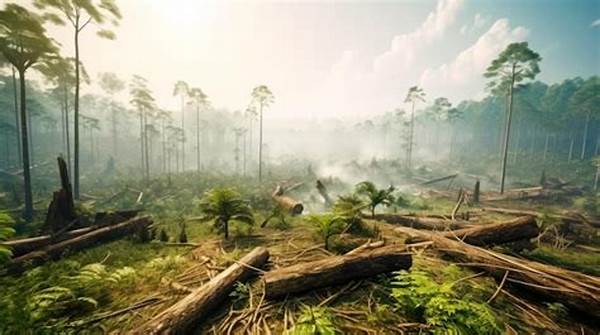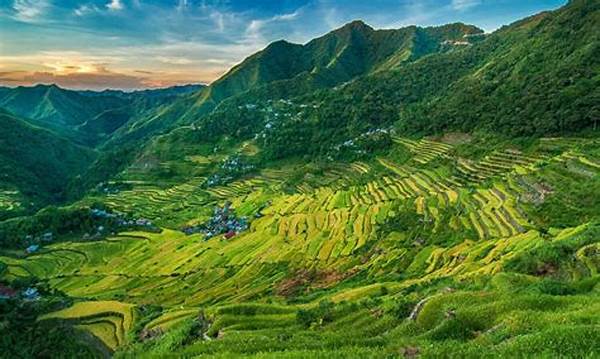In the search for Instagram-worthy moments and escapades that invigorate our daily routines, nature tourism has rapidly come under the spotlight. It’s a thrilling proposition — who wouldn’t want to wander through lush forests, stroll along pristine beaches, or conquer majestic peaks? However, as we venture out seeking the charm and allure the natural world offers, it’s becoming alarmingly evident that our footprints are taking a toll on these delicate ecosystems. Hold on to your eco-friendly hats as we delve into the unintended consequences of nature tourism: the subtle (and sometimes not-so-subtle) devastation of habitats.
Read More : Instagrammable Photo Spots Trending At Nature Tourism Park Sevillage 2025
With tons of travel agencies vying for your attention, promising exclusive journeys and mind-blowing experiences, it’s easy to forget that our adventures often come with a heavy ecological price tag. Picture yourself sipping coconut water under a tropical sun while inadvertently trampling the native vegetation. It’s a humorous juxtaposition — humans exploring nature, only to leave it less natural than before. But behind this humor lies a story of environmental impact, creating a ripple effect on habitats. So, should we put on our touristy shades and ignore these signs, or is there a smarter way to reconciliate our wanderlust with nature’s frailty?
The Impact of Nature Tourism on Ecosystems
Nature tourism often seems like a wonderful idea: reconnecting with natural environments, understanding rare ecosystems, and appreciating native wildlife. But, what if in the quest for these experiences, we’re unknowingly participating in nature tourism that destroys habitats? Researchers say that the influx of tourists to sensitive areas can lead to environmental degradation, from trampling vegetation to disturbing wildlife. The short burst of thrill we get can translate into long-term damage to these crucial ecological zones.
Statistics show a stark picture. For example, coral reefs, often a hotspot for marine enthusiasts, are under threat as tourists increase. Studies reveal that a mere touch can cause corals immense damage which can take years to heal. Forest trails, carved out by countless adventures, alter the region’s natural processes and might remain scarred forever. Whether through littering, pollution, or direct interference, nature tourism’s impact is more than a footnote in an environmental paper; it’s a growing concern that calls for action.
Hidden Costs of Trekking and Trails
Every trekker dreams of the unbeaten path, but these unbeaten paths don’t stay unbeaten for long. As trails are developed, they often disrupt plant and animal life, leading to what ecologists call “habitat fragmentation.” Interviewing locals and experts reveals a trove of stories about wildlife displacement, bird migratory pattern disruptions, and even soil erosion. It’s not a pretty picture, and yet, the allure of the wild continues to draw hordes of nature enthusiasts.
Conversations with seasoned travelers often reveal a mix of wit and wistful nostalgia as they recall once-hidden gems now crowded beyond recognition. These stories serve as testimonials of the changing landscapes — a testament to the irony of promoting peace with nature while unwittingly becoming its adversary.
Taking Action: A Shared Responsibility
Before you roll up your hammocks for the next getaway, consider this: is there a way to enjoy nature without being part of the crowd that inadvertently harms it? The travel industry is pivoting towards sustainable tourism options, emphasizing minimal impact on habitats and community-driven benefits. It’s about time we join that bandwagon! Advocating for eco-friendly travel practices and joining community conservation programs can help reverse some of the adverse impacts caused by nature tourism.
The call for action is clear: it’s time for a new kind of travel. One for responsible globetrotters who not only seek beauty but strive to maintain it for generations to come. With creativity, humor, and a bit of flair, together, we can transform the narrative from destruction to preservation.
The Role of Education and Awareness
Education is the catalyst for change. By raising awareness of the impact of nature tourism on habitats, travelers can make informed decisions. Travel blogs, campaigns, and tourism agencies have a platform to communicate effective conservation methods and narratives. Using humor and storytelling, they can engage audiences in a memorable, participatory way, transforming potential perpetrators into protectors.
Detailing Nature Tourism That Destroys Habitats
Understanding the intricate dynamics of how nature tourism can destroy habitats requires a deep dive. What elements play into these destructive patterns?
Measures in Mitigation
While the picture painted above seems grim, despair not. Timely interventions and conscious travel choices can make a world of difference.
By adhering to these methods, nature tourism no longer spells doom for our beloved habitats.
Points on Nature Tourism That Destroys Habitats
Below, we expand on what causes nature tourism to wreck the habitats we admire:
Read More : Reviews Of Forest Nature Tourism
Practical Solutions and Examples
Envisaging change isn’t enough — actions speak louder than words:
In conclusion, redefining how we explore nature is fundamental. By learning, assessing, and changing the way we perceive our eco-footprint, we can ensure future generations experience the same awe-inspiring sights we cherish today. Bridging the gap between tourism and nature conservation is not just desirable; it is indispensable.
Summary of Nature Tourism That Destroys Habitats
Over the past decades, the rise of nature tourism has been nothing short of phenomenal. It opens doors to unique landscapes and experiences, breathing life into the world’s hidden paradises. But, as this comprehensive analysis reveals, the irony of enjoying these wonders lies in their potential destruction through the very activities designed to celebrate them.
From overstressed ecosystems due to tourist influxes to wildlife disruption, the challenges posed by unchecked nature tourism demand attention. Yet, with deliberate actions and mindful exploration strategies, these obstacles are surmountable. Drawing from expert analysis, journalism, and anecdotal experiences, the evolving narrative seeks to transform potential harm into proactive protection.
Embracing Sustainable Measures
To ensure a sustainable marriage between tourism and the environment:
By permitting these practices to guide future decisions, nature tourism can evolve into a more sustainable, empathetic approach to exploring our world.
Final Thoughts and Recommendations
Creating synergy between enjoying and preserving nature requires collective efforts. By aligning tourism objectives with conservation aims, we ensure ecosystems thrive amidst human curiosity. Media outlets, educational platforms, and the broader traveling community can collaborate to inspire a paradigm shift towards eco-consciousness.
The message is persuasive yet grounded in hard facts. We must act — not only for the love of travel but for an enduring world where nature tourism enriches rather than exploits habitats. Let this be a clarion call for transformational policies and individual commitments toward a future where nature tourism complements the habitats we hold dear.
Together, with concerted efforts, we can forge an era where footprints in the sand remain as memories, not scars, securing Earth’s treasures for generations yet to wander and wonder.


